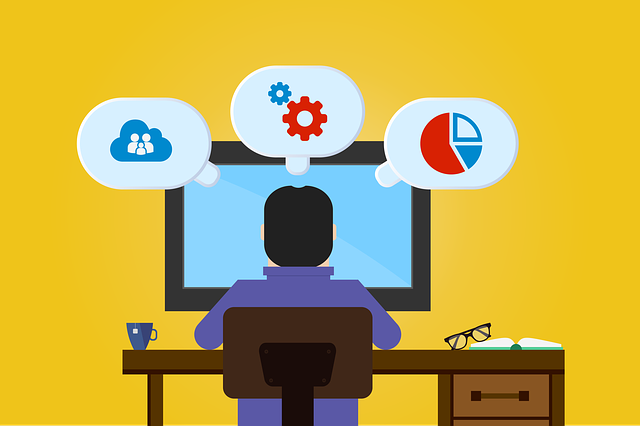Cloud computing has become an integral part of modern business infrastructure. It offers numerous benefits, such as scalability, cost-effectiveness, and flexibility. However, when it comes to choosing the right cloud strategy for your organization, there are two main approaches to consider: cloud-native and cloud-enabled. Kubernetes deployments and Container registry by JFrog provide innovative tools ready for you to use, to help make sure your business efficiently navigates both types of cloud infrastructures.
What is Cloud-Native?
Cloud-native refers to applications that are designed specifically for cloud environments. These applications are built using microservices architecture and are deployed on container platforms like Kubernetes or Docker.
The primary goal of cloud-native development is to create applications that can run in a distributed environment without being dependent on any specific infrastructure. This approach enables organizations to take full advantage of the benefits of cloud computing, with features like auto-scaling, high availability, and fault tolerance.
Cloud-native development requires a different mindset than traditional application development. Instead of building monolithic applications that run on a single server or data center, developers must break down their applications into smaller components that can be easily scaled up or down based on demand.
What is Cloud-Enabled?
Cloud-enabled refers to traditional applications migrated from on-premises infrastructure to a public or private cloud environment. This approach involves re-hosting the application in the cloud without significantly changing its architecture.
The primary goal of cloud-enabled migration is to move existing applications from legacy infrastructure to more modern systems while minimizing disruption to business operations. This approach allows organizations to take advantage of some of the benefits of cloud computing without completely redesigning their applications.
However, it’s important to note that not all legacy applications are suitable for migration to the cloud. Some may require significant modifications before functioning correctly in a distributed environment.
Critical Differences Between Cloud-Native and Cloud-Enabled
The key differences between these two approaches lie in their design philosophy and underlying technology stack:
Design Philosophy
Cloud-native development focuses on building new applications from scratch with a distributed architecture in mind. The goal is to create highly scalable and resilient systems that can operate seamlessly in a distributed environment.
On the other hand, cloud-enabled migration focuses on moving existing legacy systems from on-premises infrastructure to the cloud with minimal modifications. The goal is primarily cost savings by leveraging existing investments in hardware and software licenses while taking advantage of some benefits offered by the public or private clouds.
Technology Stack
The technology stack used in each approach also differs significantly:
Cloud-native development relies heavily on containerization technologies like Docker or Kubernetes for deployment automation and management. It also utilizes service meshes like Istio or Linkerd for traffic management within microservices architectures.
In contrast, Cloud-enabled migration typically involves virtualizing existing servers using hypervisors like VMware or Hyper-V before migrating them as virtual machines (VMs) into public clouds like AWS EC2 instances or Azure VMs, etc.
Scalability
Scalability is one area where these two approaches differ significantly:
Cloud-native applications are designed with scalability in mind from day one. They use microservices architecture with containers running independently, allowing horizontal scaling based on demand through automated processes like Kubernetes-based orchestration tools, e.g., K8S Horizontal Pod Autoscaler (HPA).
On the other hand, Cloud-enabled migrations typically involve lifting and shifting entire monolithic application stacks onto virtualized infrastructures running as VMs within public clouds. These require manual scaling procedures, resulting in slower scaling times compared with native apps.
Which Approach Is Better for Your Organization?
Choosing between these two approaches depends mainly on your organization’s needs and goals:
If you’re looking for maximum scalability and resilience while leveraging modern technologies like Kubernetes, then going with a pure-cloud native solution might be best suited.
However, suppose you want minimal disruption during migration while benefiting from some advantages of public/private clouds. In that case, opting for a hybrid-cloud-enabled solution could be more appropriate.
How does your organization’s culture need to change to support a cloud-native strategy?
Embrace Agile Development
Cloud-native development is all about agility. It requires teams to work collaboratively and iterate quickly to deliver applications that meet customers’ needs. This means organizations must embrace agile development methodologies like Scrum or Kanban.
In an agile environment, teams work in short sprints, with frequent releases and continuous integration and delivery. This approach allows developers to respond quickly to changing requirements and customer feedback, resulting in faster time-to-market.
Adopt DevOps Practices
DevOps is another critical component of a cloud-native culture. DevOps is all about breaking down silos between development and operations teams, enabling them to work together seamlessly throughout the entire software development lifecycle.
Organizations can streamline their software delivery process by adopting DevOps practices like continuous integration, continuous delivery, and automated testing while improving quality and reducing costs.


